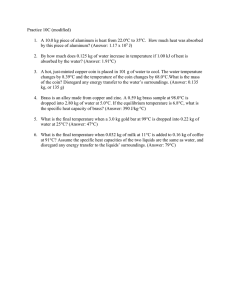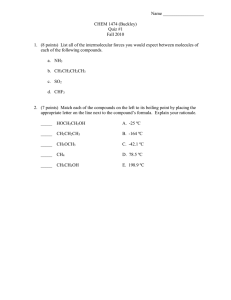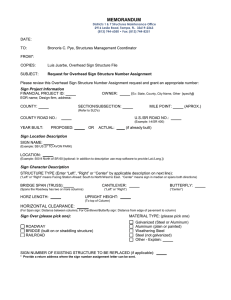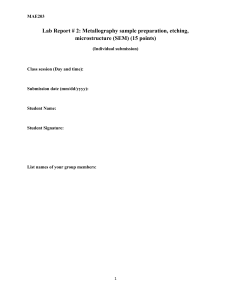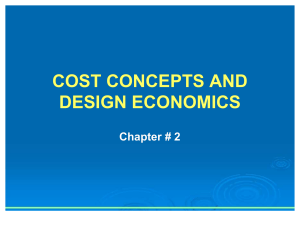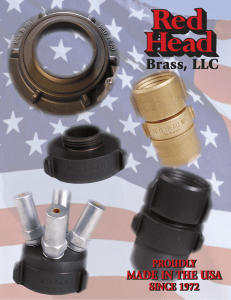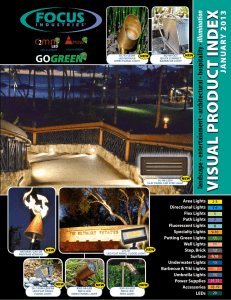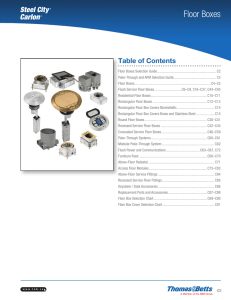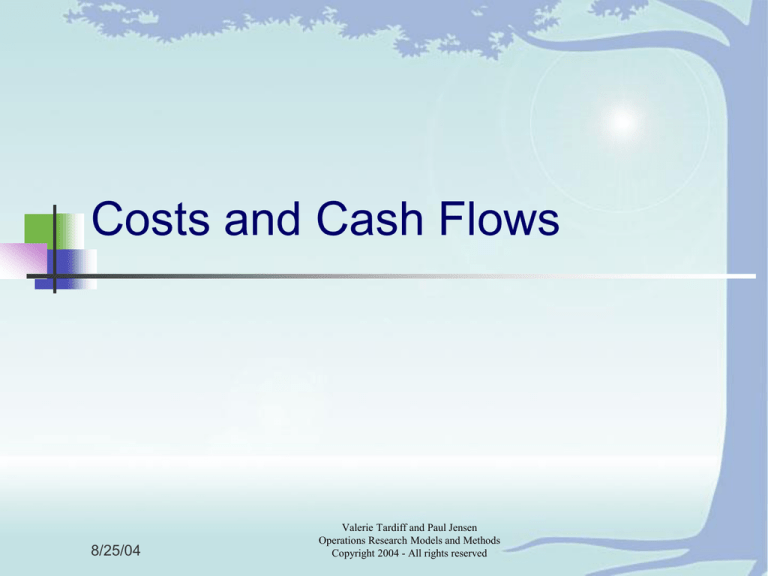
Costs and Cash Flows
8/25/04
Valerie Tardiff and Paul Jensen
Operations Research Models and Methods
Copyright 2004 - All rights reserved
Engineering Economic
Analysis - Seven Steps
1.
2.
3.
4.
5.
6.
7.
Recognize and formulate the problem.
Develop feasible alternatives.
Develop cash flows for each alternative.
Select a criterion (or criteria) for
determining the preferred alternative.
Analyze and compare alternatives.
Select the preferred alternative.
Perform monitoring and post-evaluation.
2
Cash Flows
A cash flow is a receipt or
payment of an amount of
money defined by 1) its dollar
value and 2) the time of its
occurrence
Cash flow diagrams represent
costs and revenues over time.
Cost and Revenue estimation
for the future always involve
uncertainty.
$ value
0
0
1
2
3
4
time
3
Top-Down Estimate
The first step in the determination of the
cash flows is the estimation of costs and
revenues.
The top-down approach takes data from
similar projects and modifies them to
reflect the current project.
Estimate your cost of a college degree: use
the cost of your brother’s degree three years
ago and adjust it for inflation. Add $5000 for
the cost of your participation in extra curricular
activities (your brother was a bookworm)
4
Bottom-Up Estimates
The bottom-up approach is more
detailed, breaking down the project in
small manageable units and
estimating the cost of the parts first.
Bottom-Up: Break down anticipated
expenses in categories: tuition and
fees, books and supplies, living
expenses, transportation and estimate
each as accurately as possible.
5
Cost Terminology
Variable costs change with the level of
output
Fixed costs do not change with the level
output
Cost
Variable Cost = vx
f
Total Cost = Fixed +Variable
C = f + vx for x > 0
Fixed
Cost
0
Production
Level ( x)
6
Cost Terminology (cont’d)
Recurring/Nonrecurring Costs: If costs occur every time the
organization produces goods or services, they are called
recurring. Variable costs are recurring.
Direct/Indirect Costs: If costs can be reasonably measured
and allocated to specific output, they are called direct.
Overhead Costs: all costs of providing goods and services
other than direct labor and direct material.
Cash/Book Cost: Cost that involves a payment of cash is
called a cash cost. Costs reflected in the accounting system
only are called book costs.
7
Opportunity Costs
Opportunity Cost: Cost of forgoing
the chance to earn interest (or profit)
on investment funds.
Example:
Your grandmother owns her home, but
lives with your parents. She rents her
$185,000-house for $400/month. Good
idea or lost opportunity?
8
Sunk Costs
Sunk Costs: Past costs that are
unrecoverable are not relevant for
decision-making purposes.
Example:
You are shopping for a new car, and, that
afternoon, find one you really like for $1000.
You leave a $100 deposit and plan to return
the next day. That evening, your friend offers
to sell you her car for $850. What to do think?
9
Life Cycle Costs
Life Cycle Cost
Percent
100
75
Potential for LCC
Savings
Cumulative
Committed LCC
Cumulative LCC
50
25
0
0
Definition of
Requirements
Conceptual
design
Aquisition Phase
Detailed
design
Production
Planning
Facility Aquisition
Production or
construction
Operation or Retirement and
customer use,
disposal
maintenance
support
Time
Operation Phase
10
Present Economy Studies
When the influence of time on money is
not a significant consideration, analyses
are referred to as present economy
studies
Time horizon is one year or less
No opportunity for earning interest or profit
The criterion for selection is usually
Select the alternative that maximizes profit
Select the alternative that minimizes cost
14
Material Selection Example
After machining, the finished volume of a certain metal part
is 0.17 inch3
Which raw material to choose?
Machining time/piece (min)
Cost of material ($/lb)
Scrap value ($/lb)
Cost of operator ($/hr)
Density of material (lb/in3)
Volume of raw material (in3)
Brass
Aluminum
0.64
0.96
0.24
12.00
0.42
0.52
none
12.00
0.31
0.3
0.1
0.45
15
Labor and Material Costs
Labor cost per piece = (time per piece)(labor cost per time)
Brass: (0.64 min/piece)($12/hr)(1hr/60 min) = $0.128/pc
Aluminum: (0.42 min/piece)($12/hr)(1hr/60 min)
= $0.084/pc
Material cost per piece =
(volume of raw)(lb per volume)(cost per lb)(leftover vol. of raw)(lb per vol.)(scrap value per lb)
3
3
Brass: (0.3 in )(0.31 lb/in )($0.96/lb) (0.13 in3)(0.31 lb/in3)($0.24/lb) =$0.080/pc
3
3
Aluminum : (0.45 in )(0.10 lb/in )($0.52/lb) =$0.023/pc
16
Total Cost
Brass: $0.128/pc + 0.080/pc = 0.208/pc
Aluminum: $0.084/pc + 0.08023/pc =
0.107/pc
Choose aluminum to minimize total
cost
17
Make vs. Buy Example
A company, not operating at full capacity, is
considering making a part currently bought.
Direct Material
Direct Labor
Overhead - variable
Overhead - fixed
Total Unit Cost
Make
$1.50
Buy
$1.35
$0.90
$4.25
$8.00
$7.50
18
Analysis
Utilizing the excess capacity has no
opportunity costs since the plant cannot
invest unused capacity as easily as it can
invest unused cash.
Therefore, this product will not change
fixed overhead for the plant.
So the real cost per unit is: $1.50 + $1.35
+ $0.90 = $3.75
Therefore, it is better to make the product
in-house.
19

